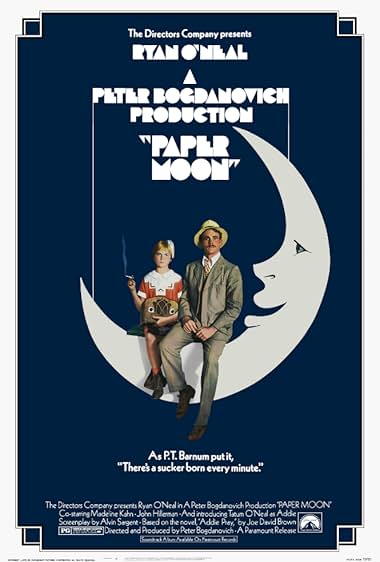Durante a Grande Depressão, um golpista cuida de uma jovem que pode ou não ser sua filha, mas os dois criam um relacionamento improvável.
Set in the midwest of the depression-era, Paper Moon follows Moses Pray and Addie Loggins – one a con artist, the other, the young girl who's the daughter of a woman who's just passed away. The pair meet when 'Mose' stops by the sparsely-attended funeral in Kansas of a woman he once knew (we never see her). In attendance, is the woman's young daughter, Addie, whom Moses agrees to transport to St Joseph, Mo — for money, of course. Mose – an inveterate hustler, has been working ostensibly as a representative of the Kansas Bible Company – who picks his marks from the obits, and tries to sell – at exorbitant prices – the decedents' spouse the custom bible they'd previously ordered. Wise beyond her years, Addie picks up on Moses' grift, and very quickly, she and Mose become a team. Traveling from town to town, making money in every dishonest way imaginable, and looking for the ultimate score. The colorful characters they meet along the way make the film all the more interesting. One in particular – Miss Trixie Delight – an exotic dancer who Mose rescues from a traveling carnival and the girl who works for her, poor, suffering Imogene. Addie sees Miss Delight as a potential rival, and she concocts a plan with Imogene to free themselves of her. The film's peppered with regional dialogue, one of the most memorable line's uttered when Mose is forced to wrestle a backwoodsman in order to trade his new car for the hillbilly's battered old truck; "make him say calf-rope, Leroy!" one of the observers calls out. Paper Moon, directed by Peter Bogdonovich is adapted from the novel, "Addie Pray" (1971) by Joe David Brown.-MARK FLEETWOOD
